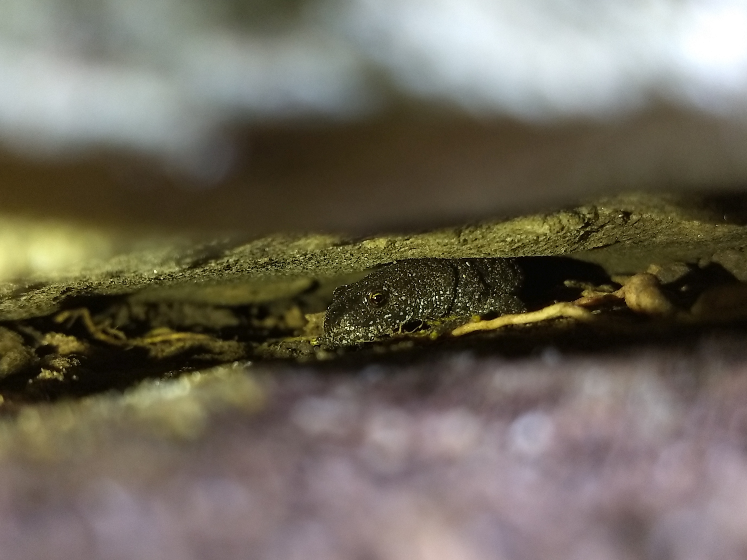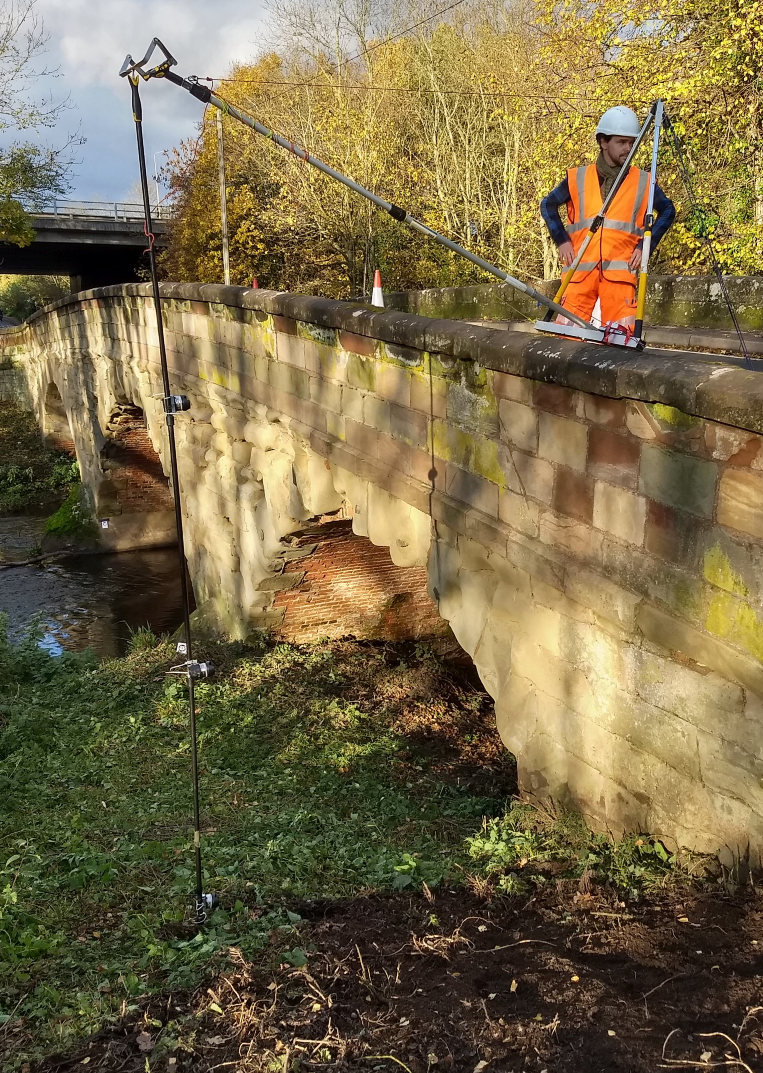This is the project update as of November 2020 for C33/001 Baginton Mill Bridge, near Coventry.
Ecology surveys
Ecologists from WCC, Swift Ecology and Atkins have been visiting the bridge over the summer and autumn to survey the structure and surrounding area for evidence of protected, or invasive species of wildlife and plants.
The bridge has been checked for the presence of bats by using an endoscope (a small camera on the end of a flexible cable) to check cracks and crevices. Ecologists also undertook dawn and dusk surveys where they used specialised listening equipment to identify any bat species arriving or leaving roosts within the bridge. This identified a possible emergence by a soprano pipistrelle. All bat species are protected under UK law, so precautionary measures are being put in place to mitigate the risk of disturbing bats or damaging their habitat.
While checking the bridge for bats, ecologists were surprised to find a great crested newt in an open mortar joint between the stone blocks, which is not a typical habitat for newts. Although common in the UK, great crested newts are a European protected species. Additional surveys will be completed before work begins in the spring and we are in the process of obtaining a license from Natural England to relocate any newts found to a suitable nearby habitat.

Photogrammetric Survey
Local residents may have noticed a team of surveyors at the bridge in November with an elaborate array of camera equipment. The team from Bill Harvey Associates have been employed to produce an accurate three-dimensional photographic model of the bridge which is being used in designing the repair and restoration scheme.

This survey allows the project team to view the bridge in incredible detail from the comfort of our (home) offices.
The images may look like normal photos but they are made up of hundreds of individual high-resolution images and are scaled so that each pixel represents 1mm. This level of detail allows us to record the existing condition of the structure, determine and measure the extent of the weathering of the stonework and prepare an accurate scope of works to be submitted with the Listed Building consent application. The 3D model is even detailed enough to help the ecologists in identifying potential bat roost and bird nesting locations.

The 3D model allows views of the structure that are not easy to see in person when at the bridge and provides tools for the project’s engineers, architect and stonemasons to measure the size of each masonry block as well as any defects. The below image is taken from beneath one of the three arches and shows the extent of the weathering to the sandstone elevation where up to 165mm of stone has eroded away. Fortunately, the brickwork that makes up the arches is in a much better condition but there is a lot of work to do to repair the sandstone elevations.
